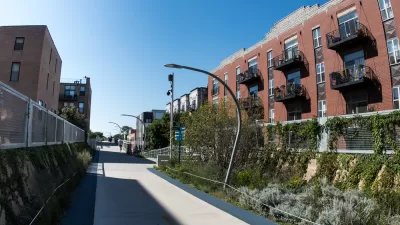Emily Badger discusses a phenomenon of gentrification in Chicago: former single room occupancy hotels, historically reserved for low-income housing, are being converted into market-rate rentals.
In the latest news in the affordability crisis of cities across the United States, Emily Badger of The Washington Post delves into a stark phenomenon in Chicago—the sale and redevelopment of single room occupancy (SRO) hotels into market-rate housing. Under this adaptive reuse business model, the SRO hotel is sold, remodeled to include a private bathroom and kitchens instead of communal facilities, and sold at market-rate prices for rooms ranging from 250-350 square feet.
Economically speaking, the purchase and redevelopment of these hotels into affordable housing is not feasible. According to Badger, "[the] cost of utilities, paid by owners, not tenants, has been rising. So have property taxes. These buildings are more expensive to operate than traditional apartments because they typically have on-site staff, and the greater tenant turnover causes more wear on units. They also often need costly repairs just to bring them up to code."
To address the flipping of SROs, the city of Chicago passed an ordinance earlier this week requiring SRO owners to "attempt six months of good-faith negotiations with a buyer on behalf of the tenants. If that falls through, though, owners then have a window of 120 days when they can try to find a buyer without any affordability restrictions. If they want to opt out of the whole process, the fees are now smaller but still substantial: Developers who wants to turn a 100-unit SRO into 100 market-rate studios would owe the city $2 million. And they’d owe each displaced tenant relocation fees between $2,000-$10,600."
Since 2011, 2,000 units of SRO hotels have been bought by developers and flipped, while only 6,000 SRO units remain today in Chicago.
FULL STORY: What happens when housing for the poor is remodeled as luxury studios

Trump Administration Could Effectively End Housing Voucher Program
Federal officials are eyeing major cuts to the Section 8 program that helps millions of low-income households pay rent.

Planetizen Federal Action Tracker
A weekly monitor of how Trump’s orders and actions are impacting planners and planning in America.

Ken Jennings Launches Transit Web Series
The Jeopardy champ wants you to ride public transit.

California Invests Additional $5M in Electric School Buses
The state wants to electrify all of its school bus fleets by 2035.

Austin Launches $2M Homelessness Prevention Fund
A new grant program from the city’s Homeless Strategy Office will fund rental assistance and supportive services.

Alabama School Forestry Initiative Brings Trees to Schoolyards
Trees can improve physical and mental health for students and commnity members.
Urban Design for Planners 1: Software Tools
This six-course series explores essential urban design concepts using open source software and equips planners with the tools they need to participate fully in the urban design process.
Planning for Universal Design
Learn the tools for implementing Universal Design in planning regulations.
Ada County Highway District
Clanton & Associates, Inc.
Jessamine County Fiscal Court
Institute for Housing and Urban Development Studies (IHS)
City of Grandview
Harvard GSD Executive Education
Toledo-Lucas County Plan Commissions
Salt Lake City
NYU Wagner Graduate School of Public Service





























